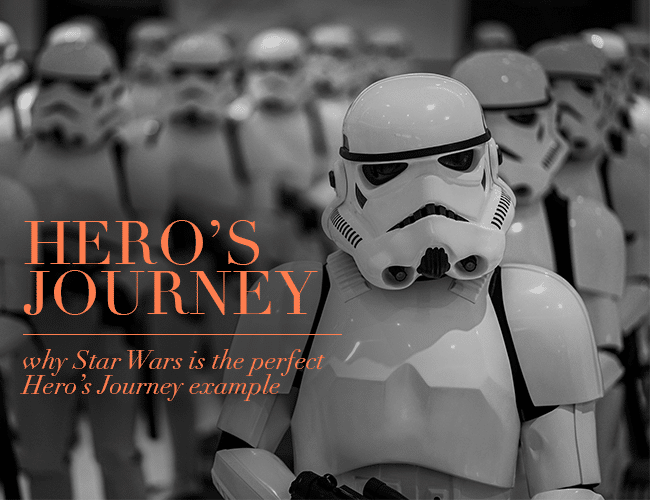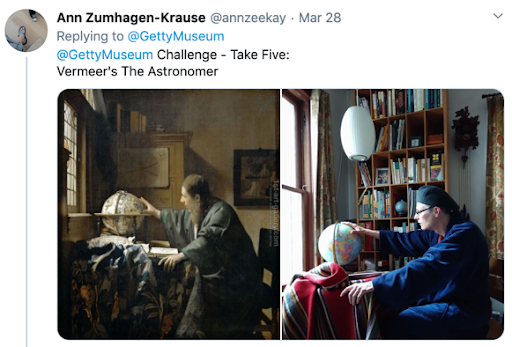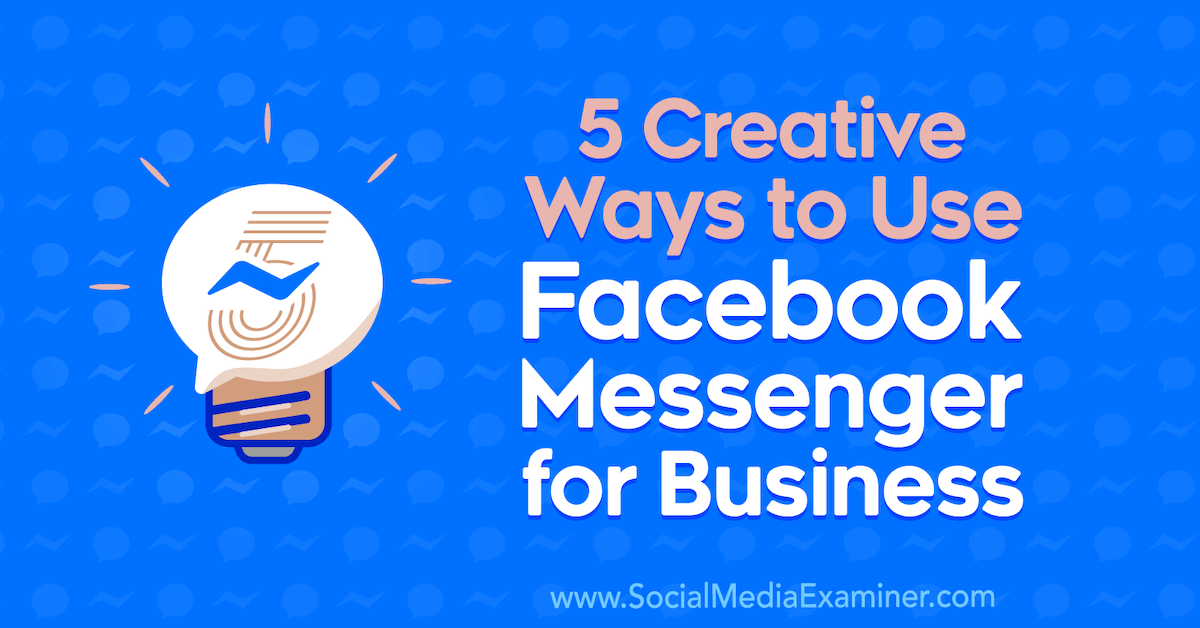http://feedproxy.google.com/~r/TheWritePractice/~3/YMYC9idsC2A/
The Hero’s Journey is easily the most-used and most-loved storytelling structure in the history of humanity. It resonates with readers in ways that are as old as human D.N.A. itself.
If you want to connect with readers and engage them on a deep level, you would be at an advantage to study this storytelling method and use as much of it as possible in your writing!

But it can be hard to study and master a concept without a clear example to follow, or to at least recognize.
And in recent history, there is no clearer use of the Hero’s Journey than George Lucas’s space opera, Star Wars.
Whether or not you particularly enjoy Star Wars (especially in light of the recent Disney sequels) or have even seen it, you’ve surely heard enough about Star Wars to recognize its primary characters, symbols, and storytelling beats.
Let’s dive into the story of a boy on a desert planet who goes on to become a Hero!
A Quick Summary of the Star Wars Hero’s Journey
For the uninitiated, or those who haven’t seen it in years, Star Wars: A New Hope is the story of Luke Skywalker, the nephew of a moisture farmer who longs to travel the stars and fight against the mighty Evil Empire. When he meets Obi-Wan Kenobi, an aged Jedi Knight, he begins his adventure alongside smugglers Han Solo and Chewbacca, and droids C-3PO and R2-D2.
The antagonists of Star Wars are two of the leaders of the Empire, Darth Vader and Grand Moff Tarkin. They command the Death Star, a new, moon-sized station station capable of destroying entire planets. In their hunt for the elusive Rebel Alliance, Vader captures Princess Leia, a young representative who is secretly a Rebel agent. To deduce the location of the Rebels’ secret base, Vader and Tarkin use the Death Star to destroy Leia’s home planet of Alderaan.
Aboard the Millenium Falcon, Luke Skywalker and his companions enter the Death Star and successfully free Princess Leia and escape, but not before Obi-Wan is killed in a lightsaber duel with Darth Vader. They fly back to the Rebel Base, only to realize that the Empire has been tracking them, and now the Death Star is bearing down on their secret headquarters.
A grand space battle ensues, Luke piloting a X-Wing fighter craft. In the nick of time, Luke uses the Force to fire torpedoes into the Death Star’s main exhaust port, blowing up the entire space station. Vader escapes in his fighter craft, but Tarkin is killed.
The heroes return to a grand welcome and hope is restored to the galaxy!
Of course there are more Star Wars films, and this analysis will allude to several of them. However, the majority of our exploration of the Star Wars Hero’s Journey will stay with the 1977 original film, as George Lucas was careful to craft a story that was heavily based on ancient archetypes that have worked in the human mind for millenia.
The Characters of Star Wars
George Lucas began planning his space opera by sketching out the characters. He knew, like Campbell knew, that great stories are built on the foundation of great characters.
First, we have the Hero in Luke Skywalker. What makes him the Hero? Mainly, these three factors:
- His goal is empathetic.
- His pursuit of that goal drives the narrative.
- He grows and changes while pursuing the goal.
On that journey, Luke comes into conflict with the story’s Shadow, Darth Vader. Unlike Luke, Vader’s goal (to smash the Rebellion against the Empire) is not empathetic. Vader’s attempts to find the Death Star plans and destroy the Rebels obstruct Luke’s goal throughout the story.
Luke also makes a pair of friends, or Loyal Retainers, in Han Solo and Chewbacca the Wookie. Their loyalty is tested, however, when the Rebels choose to attack the Death Star. And while Han abandons Luke during the Approach step of the Hero’s Journey, he indeed returns during the Resurrection, providing a cathartic climax that sees evil destroyed and good triumphant on multiple levels.
Luke isn’t with a Mentor, either. Obi-Wan “Ben” Kenobi arrives to provide both the story’s Call to Adventure, or Inciting Incident, and then guide Luke on the path to the way of the Jedi and the Force. As can be expected in a Hero’s Journey, the Mentor is killed (or is he?) along the way, leaving Luke to face the Shadow on his own.
Finally, Luke encounters a number of Threshold Guardians who attempt to destroy him and his fellow rebel forces. Jawas, Sand People (or Tuskan Raiders, for the nerds who are carefully judging this analysis), Stormtroopers, the Trash Compactor Monster, the Death Star cannons, the TIE fighters, and Vader himself all put themselves between Luke and his goal along the way.
The Structure of Star Wars
These characters archetypes, and more, fill a story that is designed to follow all twelve steps of the Hero’s Journey, often reusing or overlapping steps for maximum effect. Here’s how Star Wars: A New Hope uses all twelve steps as checkpoints that move its story forward with incredible storytelling power.
Step 1: The Ordinary World
Ordinary World: Luke lives in Tatooine but doesn’t like it. Like all Heroes, his eyes are drawn to the horizon where he longs to achieve heroic deeds in the rebellion against the Empire.
Step 2: The Call to Adventure
Call to Adventure: After buying a pair of seemingly inconsequential robots, Luke discovers that his R2 droid contains the Death Star plans and could help the Rebels destroy this planet-killing weapon. Obi-Wan Kenobi then calls Luke to action, saying, “You must learn the ways of the Force if you’re to come with me to Alderaan.”
Step 3: The Refusal of the Call
Refusal of the Call: Luke balks at this invitation, overwhelmed at the sudden change sweeping his life. “I can’t get involved! I’ve got work to do! It’s not that I like the Empire. I hate it! But there’s nothing I can do about it right now. It’s such a long way from here.”
Step 4: Meeting the Mentor
Meeting the Mentor: Technically, Luke has already met his mentor. But the active mentoring begins when Luke hurries home, only to find the compound burning and his aunt and uncle murdered by stormtroopers of the Empire.
Luke stands before Obi-Wan, heartbroken. “There’s nothing you could have done, Luke, had you been there,” Obi-Wan says. “You’d have been killed, too, and the droids would be in the hands of the Empire.” Then Luke commits to joining the old Jedi and venturing into the unknown toward Alderaan.
Step 5: Crossing the Threshold
Crossing the Threshold: The story then pauses to show how consequential this choice is, showing Luke, Obi-Wan, and the droids standing atop a massive cliff. They look down into the valley below. Then Obi-Wan utters, “Mos Eisley Spaceport. You will never find a more wretched hive of scum and villainy. We must be cautious.”
It is at this point that our Hero, Luke, crosses from the safe and familiar to the unfamiliar.
Step 6: Trials, Allies, and Enemies
Trials, Allies, and Enemies: Luke begins the middle of the story by acquiring a pair of allies, or Loyal Retainers: Han Solo and Chewbacca. However, he also encounters an enemy when a disfigured man accosts him at the bar.
The conflict escalates as Luke and his companions escape from Tatooine, infiltrate the Death Star, rescue Princess Leia (who seems to play the archetypal role of the Damsel in Distress, but with no distress whatsoever), survive the trash compactor, disable the tractor beam, and escape the Death Star thanks to Obi-Wan’s sacrifice.
If it seems like this summary has hit the fast-forward button, it does for a reason. Step #6 is the longest step in any heroic journey, but often contains scenes that shrink down the entire structure into a chapter or two.
In the case of Star Wars, one can see numerous calls to adventure, refusals, threshold crossings, the gaining of an ally or knowledge of an enemy, approaching an ordeal, the ordeal itself (often with a self-contained resurrection), and then a reward. This is Story Structure 101: Any Hero’s Journey will contain smaller, miniature heroic journeys sharing the same archetypal D.N.A.
Step 7: The Approach
Approach: Having escaped the Death Star, the heroes fly to Yavin 4 where the Rebel Base has been hidden. The Death Star plans are extracted from R2 and a weakness is indeed found. The fighter pilots receiving a briefing about this weakness and plan their strategy.
Meanwhile, Han Solo decides not to join the rebels, deeming the attack “my idea of suicide.” He takes his financial reward for rescuing Princess Leia and flees with Chewbacca, leaving Luke alone with a bunch of characters the audience doesn’t know.
Step 8: The Ordeal
The Ordeal: Luke and his fellow fighter pilots attack the Death Star, facing skilled enemies in TIE fighters and Darth Vader himself in his own special ship. One of Luke’s childhood friends is killed in the assault (Biggs).
Step 9: The Reward
The Reward (occurs twice in this story): Star Wars contains two Reward steps; one is the “false” reward, while the second is the “true” reward. First, the heroes are rewarded with safety and freedom after escaping the Death Star, and the story pauses to enjoy this moment of low tension.
However, the tension ratchets up again when Han Solo makes it clear that he only cares about his financial reward, which is indeed a “false” one, according to the movie’s moral theme. The second reward occurs later, in Step #12.
Step 10: The Road Back
The Road Back (occurs twice in this story): The first Road Back is the backdrop for the first Reward, which showcases Han’s conflicting loyalties. It is the “fake-out ending” meant to lead the viewer into thinking that the story is resolved because the heroes escaped from the Death Star.
Step 11: Resurrection
Resurrection: Rewinding back to the Ordeal (“Attack on the Death Star”), the scene climaxes as Luke is navigating a narrow trench in his X-Wing fighter toward the target with Darth Vader screaming at his heels. Luke — and the Rebels — are about to be destroyed by Vader and the Death Star, as the planned attack is not going as hoped.
Then a voice calls out to Luke: “Use the Force, Luke! Let go, Luke!” It’s the voice of his disembodied Mentor, Obi-Wan Kenobi. Luke switches off his targeting computer, closes his eyes, and fires his torpedoes . . . and the Death Star explodes.
This also coincides with a personal and relational resurrection of Han Solo. When he proves his true loyalty and helps Luke outwit Vader and destroy the Death Star, the viewer receives the satisfaction of having seen a man morally “die” only to find “life” again by doing what is morally right.
Step 12: Return with the Elixir
Return with the Elixir: When Luke, Han, and Chewie return, they don’t just bring safety and security to the Rebellion. They bring hope, the titular value of the film.
This is also where the second “true” reward comes in. The medals the characters receive may not seem like much, but they symbolize the new identity of the wearers: Heroes. Luke begins as a simple farmboy; now he is a Hero who brings hope to the galaxy.
The Scenes of Star Wars
Within its tightly-designed structure, Star Wars makes sure it forces its Hero to deal with archetypal heroic situations, or scenes.
Here’s how the Star Wars Hero’s Journey shows these scenes:
The Choice to Go
After suffering the loss of his aunt and uncle, Luke realizes that he must confront the threat of the Empire himself. He declares to Obi-Wan, “I want to come with you to Alderaan. There’s nothing here for me now. I want to learn the ways of the Force and become a Jedi like my father.”
The Initiation
Soon after his Choice to Go, Luke is initiated into the world he has chosen. First, he faces physical threats, like the bullies in the Mos Eisley cantina and the Empire’s merciless stormtroopers while escaping on the Millenium Falcon.
But he also faces his first initiation into the way of the Jedi when he uses a lightsaber for the first time. Luke shows growth by doing as Obi-Wan says, “to stretch out with [his] feelings.”
The Task
Luke doesn’t have much time to train as a Jedi, though, because soon he is pulled into the Death Star with the other heroes. After learning that the princess of Alderaan, Leia Organa, is about to be executed, Luke makes it his mission to rescue her. In a thrilling scene filled with disguises, witty banter, and laser shootouts, Luke successfully rescues Leia from her metallic prison.
All Hope is Lost
This scene occurs just before the Resurrection as Luke speeds down the Death Star trench in his X-Wing fighter. Jumping between scenes in Luke’s ship, the Death Star control room, and the rebel base on Yavin 4, two things occur nearly simultaneously.
First, the Death Star pulls within firing range of the rebel base and begins powering up its planet-killing weapon. Second, Darth Vader successful shoots R2-D2 in Luke’s ship, causing Luke to cry, “I’ve lost R2!” And in this moment, it seems like the bad guys are certainly going to win.
The Return with Blessings
But a miracle happens! Han Solo helps knock Vader off of Luke’s tail, and Luke hits a bullseye with his torpedoes, exploding the Death Star in a massive blast.
The heroes return to Yavin 4, embrace one another, and celebrate. But then we see a colossal ceremony with hundreds of rebels in uniform. They stand at attention to honor the victorious heroes who are decorated with medals.
And those hundreds of rebels — stand-ins for the audience — applaud as incredible hope floods their spirits.
Learn more: Here’s how to write and innovate these timeless Hero’s Journey scenes!
The Themes of Star Wars
George Lucas was a fan of mythology, including East Asian religions that focus on the balance of different forces. As he layered his story with these themes, Lucas created a rich tapestry for future stories and storytellers, which is why Star Wars is a beloved franchise up to this day.
Here’s how Star Wars imbues its story with deeply powerful themes.
1. Good vs. Evil
Perhaps the clearest and most obvious thematic relationship in Star Wars is the one that makes it most enduring: the struggle between the forces of Good and those of Evil.
Representing Good are the white-and-beige clad “good guys” Luke Skywalker and Obi-Wan Kenobi. They seek selfless, positive virtues, like freedom, peace, and hope.
Bad is embodied by the black-armored Darth Vader, as well as the darkly-uniformed Grand Moff Tarkin. They command a massive machine of death, control, and fear, wishing to pull all planets and systems under the thumb of the Empire. Their selfish cruelty is confirmed when they destroy Alderaan (and its millions of inhabitants) for no good reason other than to torture Princess Leia.
2. Haven vs. Wilderness
Star Wars is a place with several Havens that stand opposite its Wildernesses. Remember that Lucas based Star Wars on the Western genre, with its wide, endless vistas and renegade, rough-and-tumble characters.
Here are several diametrically opposed set locations in the story:
- The sand sea of Tatooine is a Wilderness, but Luke’s homestead and Obi-Wan’s house are Havens.
- The Mos Eisley cantina is a social Wilderness where Luke is confused and alone, but the Millenium Falcon is a Haven where he learns about the Force and the war against the Empire.
- The Death Star is a Metallic Wilderness of inorganic violence and unfeeling cruelty, but the Rebel Base is a Lush, Forested Haven where Luke is reunited with an old friend and fits easily into his new, heroic role.
It’s notable that the film really only contains these major set pieces, with the exception of the film’s prologue aboard Princess Leia’s ship. Each location contains an opposite, so the story seems to swing, like a pendulum, back-and-forth between safety and danger, between Haven and Wilderness.
3. Nature vs. Machine
The opposing power of Nature and Machine is evident throughout Star Wars. As just mentioned, the Empire’s base, the Death Star, is a cold, lifeless killing machine. However, the Rebel Base is set amid a lush green rainforest. Simple contrasts like this provide a simple form of establishing this theme.
But Star Wars digs deeper than this by using its mythology of the Force to layer the theme deeply into the narrative. And its primary narrative device is the Lightsaber.
Heralded by Obi-Wan as “an elegant weapon,” the Lightsaber is the tool of the nearly-extinct Jedi. It is “not as clumsy or random as a blaster,” Obi-Wan opines.
Yet Han Solo, a self-reliant rule-breaker, dismisses the Jedi way as “a lot of simple tricks and nonsense.” He affirms his self-reliant beliefs when he claims, “Hokey religions and ancient weapons are no match for a good blaster at your side, kid.”
Clearly the more mystical, “natural” weapon is less desirable than the machine, the blaster.
Yet the Lightsaber is the weapon Luke trains with and comes to embrace as a part of the Jedi way. He also embraces the Jedi way when he obeys the disembodied voice of Obi-Wan Kenobi during the Death Star attack.
“Use the Force, Luke!” Obi-Wan urges. Luke obeys by taking a specific action: turning off his computer, a machine. Clearly the mindset of Luke’s world is to trust in machines; the way of the Jedi is to trust in the Force.
It makes sense now that the Empire would put all of its hope in a giant machine, the Death Star. It is also led by a man who is “more machine now than man,” Darth Vader.
4. Father vs. Son
To be fair, this theme would not come home to roost for Star Wars until its sequel, The Empire Strikes Back, was released three years later in 1980. However, George Lucas has consistently claimed that he planned for Vader to be Luke’s father all along. With that in mind, Star Wars has been the paragon of this theme in popular culture, at least since Shakespeare and the Greek tragedians.
And where Star Wars successfully makes great use of this theme is by invoking the idea of Destiny. In other words, if my father is a murderous, man-machine monster, will I be too?
This conflict is apparent in the cave scene on Dagobah, where Luke confronts the darkness within. He battles a phantom vision of Darth Vader and successfully decapitates it. But when the head rolls to a stop, Luke sees his own face within Vader’s helmet. Clearly the son is terrified of committing the sins of the father.
5. Sibling vs. Sibling
The original Star Wars trilogy didn’t concern itself with sibling rivalry, instead using another “they’re related” type twist in the third installment, Return of the Jedi.
But the prequel trilogy, written and directed by Lucas several years later, used it to great effect by casting Obi-Wan and Anakin Skywalker as brothers. No, they aren’t biological brothers, but this view is supported by Obi-Wan’s pained cry, “You were my brother, Anakin!” after defeating him in combat in Revenge of the Sith.
During Anakin’s training and the horrors of the Clone Wars, Obi-Wan and Anakin fought side-by-side and struggled with the befuddling decisions of the Jedi Council. They grew to trust and even love each other; but Anakin’s need for power and validation drew him away from his Jedi “brother” and toward a more sinister Sith “father,” Senator (and later Emperor) Palpatine.
This is why the final battle of Revenge of the Sith, despite some of its silly choreography, is painfully emotional. There was so much potential for these two men to do great things together! But their relationship has been broken by mistrust, fear, and horrible crimes, and it can only end violently.
Learn more: Here’s how to establish these classic Hero’s Journey themes!
The Symbols of Star Wars
To wrap up our analysis of Star Wars and the Hero’s Journey, let’s briefly look at how the filmmakers fill the story with powerful symbols, connecting the physical world of the story with the nonphysical feelings audiences have about the world.
1. Light vs. Darkness
This thematic relationship is apparent in two respects. One, of course, is physical: the “good guys” vs. the “bad guys.” And while the stormtroopers wear stark, white, skeletal armor, the darkness of the Empire is embodied by the black-armored Darth Vader. Standing opposite this darkness is Luke Skywalker, a lightly-clad and optimistic youth who learns about the “light side” of the Force from his beige-cloaked mentor, Obi-Wan Kenobi.
It’s noteable that some characters are more morally ambiguous, sporting clothing of mixed color. Han Solo wears an off-white shirt covered by a black vest. Is he ultimately drawn to the selfless, others-serving light? Or the nefarious, selfish dark? Only the story can tell!
2. The Magic Weapon
Even though it doesn’t play a role in the climax of this film, the Lightsaber is one of the most universally-recognized pieces of fictional lore ever created. There’s a reason people will pay $199 to make one at Disneyland, even though it isn’t “real.”
The Lightsaber is, indeed, magical. We can’t create anything like it with the technology we currently possess. The Lightsaber also jives with the morality of the Jedi: light and defense. So while Luke doesn’t wield it during the Death Star attack, he does employ its virtues by turning off the computer (blaster) and trusting in that which powers the saber (the Light).
3. The Underworld
The world of Star Wars is filled with numerous “underworld” locations where our heroes face numerous dangers. Here are the ones found in A New Hope:
- The Jawas’ Sandcrawler: C-3PO and R2-D2 are trapped in the “belly of the beast,” an allusion to Jonah and the Whale.
- The Mos Eisley cantina: A bar crawling with thugs and criminals where Luke almost loses his head in a scuffle.
- The trash compactor: Beneath the detention block, the heroes are nearly drowned by a monster and crushed by the contracting walls.
- The Death Star trench: In order to defeat this monstrous machine, the heroes must navigate its lowest points, nearly colliding with the surface. It is also here where Luke and the Rebels come closest to certain death.
4. The Castle
What better “castle” for a science-fantasy story than a massive space station?
Of the many memorable lines from the film, who can forget Obi-Wan muttering, “That’s no moon . . . it’s a space station.”
And the Death Star has all the trappings of a Castle: guards, defenses, weapons, a dungeon (with a princess locked in it, no less), a king (Tarkin), and a moat (the trench). It is the place where the Shadow resides and possesses the most power; it is also a place where the Hero is relatively powerless and must use his wit and craftiness in order to find success.
This is yet another example of Lucas using age-old archetypes to fill his new, unfamiliar world (the galaxy of Star Wars) with familiar tropes that audiences can instantly recognize and understand.
5. The Unhealable Wound
Another archetype that wouldn’t appear until the sequel, the Unhealable Wound makes its appearance when Luke faces Darth Vader in combat at the end of The Empire Strikes Back.
Cornered and overpowered, Luke makes a massive mistake and exposes his right hand, which Vader swiftly cuts away with his own red-hot Lightsaber. Luke clutches the cauterized stump and screams in pain.
That hand is gone.
While Luke is able to acquire a mechanized replacement at the film’s end, it will serve as a constant reminder of his failure and the temptation to the Dark Side of the Force, a temptation his mostly-machine father gave into. This Unhealable Wound plays a major role in Luke’s character development, even into Disney’s “sequel trilogy.”
Learn more: Here’s how to utilize deep and meaningful Hero’s Journey symbols!
The Power of the Hero’s Journey
If you take the time to watch “Behind the Scenes” documentaries about the making of Star Wars, you’ll discover that the actors and crew didn’t believe in the film while they were making it. From their point of view, everything was just . . . weird. After all, there was a massive dude in a dog suit, a breathless British bodybuilder in a black suit, malfunctioning props and oddball costumes, and dialogue that made little to no sense.
Some even describe feeling sorry for writer-director George Lucas.
But they didn’t recognize the meta-structure behind it all. They didn’t share the same mythic vision as their chief storyteller.
George Lucas wasn’t telling a story about droids, laser swords, or even an Empire and a Rebellion.
He was telling the timeless story of Good vs. Evil, Nature vs. Machines, and more, using this wildly imaginative science-fantasy backdrop to do it.
//platform.twitter.com/widgets.js
“
The cast and crew of Star Wars didn’t believe in the film as they were making it—but George Lucas knew the power of the Hero’s Journey, and he was right.
Now, to be completely fair, massive credit must be given to film editors Paul Hirsch and Richard Chew. They took Lucas’s original, extremely rough and choppy cut of the movie and resurrected the ailing movie.
By shortening shots, cutting more often, and capturing moments of intense energy from the various takes, Hirsch and Chew were able to instill the film with the energy, flow, and mythic quality that Lucas intended. Lucas has received his fair share of criticism for questionable filmmaking in the years following the original Star Wars trilogy.
However, it was and is his vision for Star Wars that continues to thrill audiences to this day, and his vision was one that utilized the full power of the Dark Side. . . . I mean, the full power of the Hero’s Journey!
So as you study Star Wars and other films that use the Hero’s Journey to great advantage, consider which of these elements you can use to supercharge your own epic tale to be told.
Your readers will thank you for it!
What’s your favorite moment from Star Wars? Does it connect with any of these Star Wars Hero’s Journey elements? Let us know in the comments.
PRACTICE
Your writing practice today is Star Wars Hero’s Journey-themed, of course. It’s your turn to write a Hero’s Journey-based science fantasy saga. Or the first scene of one, at least!
Your protagonist is an underdog character on a remote planet. Unbeknownst to this character, they’re about to be called to a great adventure among the stars.
Write the opening scene of their story. Who are they? What’s their ordinary world like? And what happens to disrupt their regular life and call them to adventure?
Take fifteen minutes to write. When you’re done, share your scene in the comments below, and be sure to leave feedback for your fellow writers!
The post The Perfect Hero’s Journey Example: Star Wars appeared first on The Write Practice.












